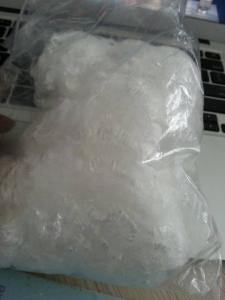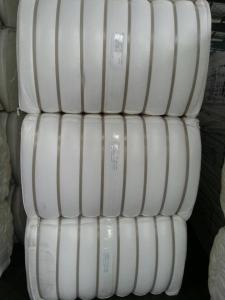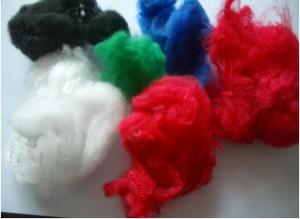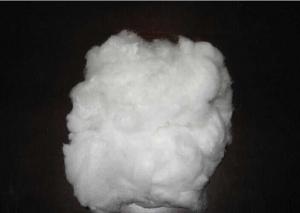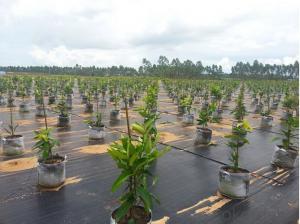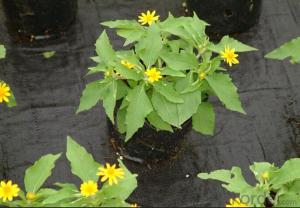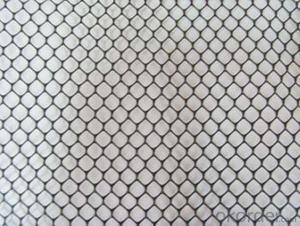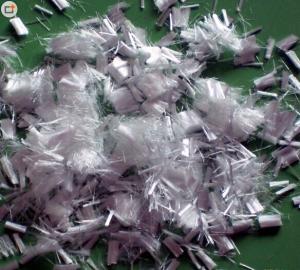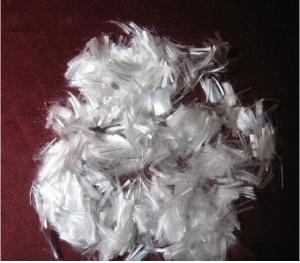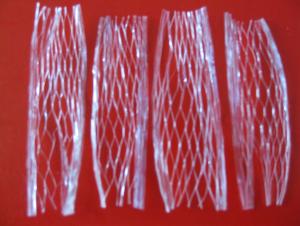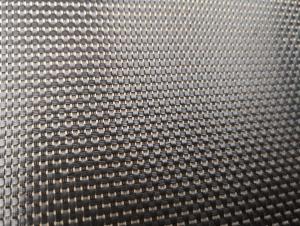PP Staple Fiber for Non-woven Geotextile Use
- Loading Port:
- China main port
- Payment Terms:
- TT OR LC
- Min Order Qty:
- 10000 kg
- Supply Capability:
- 4000000 kg/month
OKorder Service Pledge
OKorder Financial Service
You Might Also Like
PP Fiber Introduction
Polypropylene fiber also called PP fiber, is a new type of reinforcing and crack-resistant building material for bitumen concrete reinforcement. It is produced by special technique.With polypropylene as its raw material,fiber-mesh is produced by special technology.It appears net-like structure with many monofilaments connected.
The horizontal structure in monofilament can be destroyed in the course of the stirring owng to friction and rubbing,and the monofilament or net like structure will fully stretch, thus the concrete is reinforce by a great number(more than 7 million pieces per cubic meter) of polypropylene fibers.
Specification of PP Staple Fiber for non-woven Geotextile Use
1.Material | 100% polypropylene staple fiber |
2.Color | White,etc |
3.Fineness | 2.5D-25D |
4.Fiber Length | 51mm/64mm/76mm,etc |
5.Samples Time | within 3 days if available spec |
6.MOQ | 20 Metric tons |
7.Delivery time | within 15days against T/T deposit or L/C original |
8.Packing&Container loading
| option 1: Hydraulic pressure bale, 275kg/bale. |
option 2: as customer required. | |
20GP: 1*20GP can be loaded 9Tons. | |
40HQ: 1*40HQ can be loaded with 20 Tons. | |
9.Production Capacity | 500Mtons per month |
10.Payment term | L/C at sight, T/T 50% deposit, balance against B/L. |
Features
Synthetic Polypropylene Concrete Fiber, as the filling material of concrete, has the properties of good dispersibility, resistance to acid and alkali. The main functions are:
1. crack resistance;
2. Increase the seepage resistance of concrete;
3. Increase the freezing & thawing resistance of concrete;
4. Increase the impact resistance of concrete;
5. Increase the durability resistance of cncrete;
6. Increase the fire resistance of concrete.
End use of PP Staple Fiber for non-woven Geotextile Use
stuffing and packing of toy,pillow,sofa,seatcushion and leaning cushion;
thermalinsulation lining of shoes,gloves,cap and garment and so on;
raw material of spray finishing cotton,gel-free cotton,hardening cotton and non wovens;
Product Photos of PP Staple Fiber for non-woven Geotextile Use
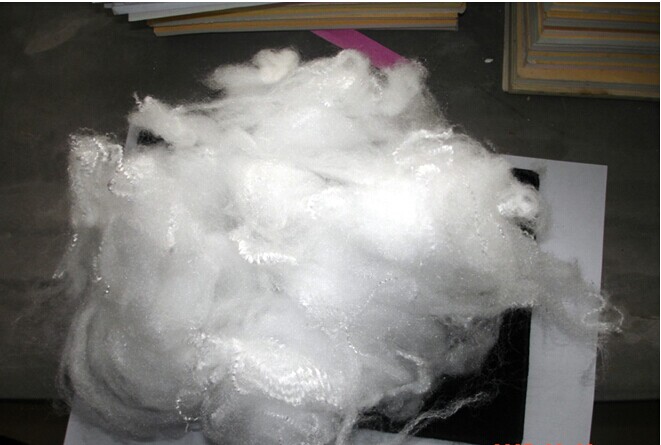
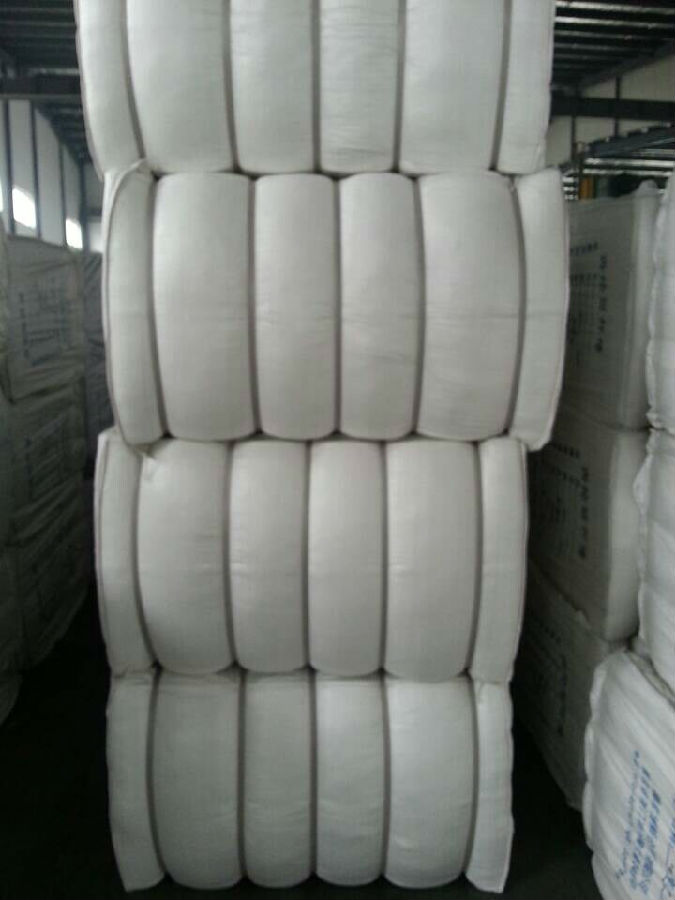
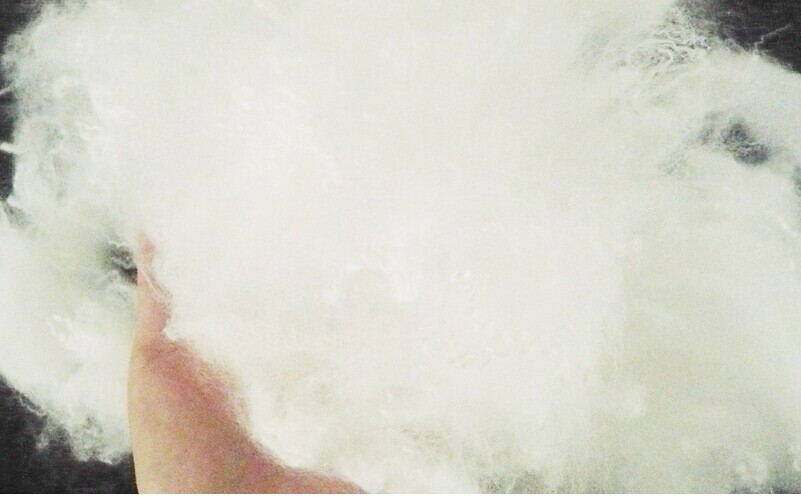
- Q:Are earthwork products resistant to soil settlement and subsidence?
- Yes, earthwork products are generally designed to be resistant to soil settlement and subsidence. These products are specifically engineered to provide stability and durability in various soil conditions, helping to minimize the risk of settlement and subsidence issues. However, it is important to ensure proper installation and maintenance to maximize their effectiveness.
- Q:Can geosynthetics be used for lining canals and reservoirs?
- Yes, geosynthetics can be used for lining canals and reservoirs. Geosynthetics such as geomembranes and geotextiles are commonly used to provide a protective barrier and prevent leakage of water in these applications. They offer various advantages such as durability, flexibility, and resistance to chemicals, making them suitable for lining canals and reservoirs.
- Q:How do earthwork products contribute to noise reduction?
- Earthwork products such as berms, mounds, and retaining walls can contribute to noise reduction by acting as physical barriers that absorb and block sound waves. These structures have the ability to deflect and redirect noise, reducing its intensity and preventing it from traveling further. Additionally, the use of earthwork materials like soil and vegetation can help in absorbing sound, further enhancing the noise reduction effect.
- Q:How do earthwork products contribute to slope protection in landslide-prone areas?
- Earthwork products, such as geotextiles, geogrids, and geomats, play a vital role in slope protection in landslide-prone areas. These products are designed to enhance the stability of slopes by reinforcing the soil and preventing erosion. Geotextiles act as a barrier against water infiltration, reducing the risk of slope failure. Geogrids provide reinforcement by interlocking with the soil, increasing its strength and preventing movement. Geomats, on the other hand, offer erosion control and vegetation support, stabilizing the slope and reducing surface runoff. Overall, earthwork products contribute to slope protection in landslide-prone areas by improving slope stability, reducing erosion, and enhancing the overall resilience of the slopes.
- Q:How do geosynthetic liners contribute to groundwater recharge in water storage facilities?
- Geosynthetic liners play a crucial role in groundwater recharge in water storage facilities by preventing the loss of water through seepage. These impermeable liners act as a barrier, preventing water from penetrating the soil and instead directing it towards the underlying aquifer. This allows for the efficient collection and storage of water, ensuring that valuable water resources are replenished and available for future use.
- Q:What are the advantages of using geocells in earthwork projects?
- There are several advantages of using geocells in earthwork projects. Firstly, geocells provide stability and reinforcement to the soil, preventing erosion and soil movement. They also offer increased load-bearing capacity, allowing for the construction of structures on weak or unstable soils. Additionally, geocells are cost-effective as they require less fill material and excavation compared to traditional methods. They are also easy to install and maintain, saving time and labor. Moreover, geocells promote sustainable practices by using recycled materials and reducing the need for natural resources. Overall, geocells provide a durable, efficient, and environmentally-friendly solution for earthwork projects.
- Q:What are the different types of geotextile bags available for erosion control?
- There are several different types of geotextile bags that can be used for erosion control, including sandbags, silt bags, sediment bags, and geotextile tubes or mattresses. Each type of bag is designed to address specific erosion control needs, such as preventing soil erosion, filtering sediment, or stabilizing slopes. These bags are typically made of durable geotextile fabric that allows water to pass through while retaining soil particles, effectively reducing erosion and promoting vegetation growth.
- Q:What are the different types of retaining walls?
- There are several different types of retaining walls, including gravity walls, cantilever walls, sheet pile walls, anchored walls, and counterfort walls. Each type has its own specific design and construction method, depending on the site conditions and the desired function of the wall.
- Q:Can earthwork products be used in retaining wall construction?
- Yes, earthwork products can be used in retaining wall construction. Earthwork products such as geotextiles, geogrids, and geocells are commonly used to reinforce soil and provide stability in retaining walls. These materials can help improve the strength and durability of the retaining wall, preventing soil erosion and enhancing its overall performance.
- Q:What are the different applications of geotextile tubes in environmental projects?
- Geotextile tubes have various applications in environmental projects, including shoreline protection, sediment control, dewatering, and erosion control. They are often used to create barriers or containment structures for sediment and pollutants, preventing their spread and protecting surrounding ecosystems. Geotextile tubes also play a role in shoreline stabilization by reducing erosion and promoting vegetation growth. Additionally, they are utilized for dewatering purposes, allowing for the separation of water from solids in areas such as construction sites or wastewater treatment plants. Overall, geotextile tubes are versatile tools that aid in the management and preservation of the environment.
1. Manufacturer Overview |
|
|---|---|
| Location | |
| Year Established | |
| Annual Output Value | |
| Main Markets | |
| Company Certifications | |
2. Manufacturer Certificates |
|
|---|---|
| a) Certification Name | |
| Range | |
| Reference | |
| Validity Period | |
3. Manufacturer Capability |
|
|---|---|
| a)Trade Capacity | |
| Nearest Port | |
| Export Percentage | |
| No.of Employees in Trade Department | |
| Language Spoken: | |
| b)Factory Information | |
| Factory Size: | |
| No. of Production Lines | |
| Contract Manufacturing | |
| Product Price Range | |
Send your message to us
PP Staple Fiber for Non-woven Geotextile Use
- Loading Port:
- China main port
- Payment Terms:
- TT OR LC
- Min Order Qty:
- 10000 kg
- Supply Capability:
- 4000000 kg/month
OKorder Service Pledge
OKorder Financial Service
Similar products
New products
Hot products
Related keywords
